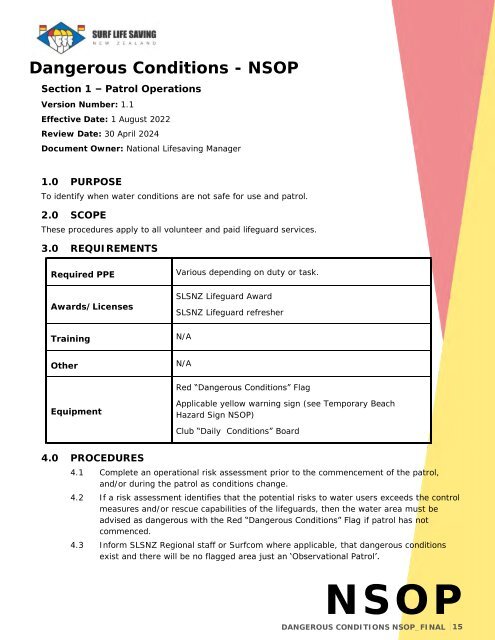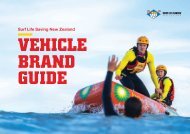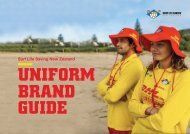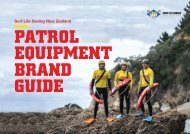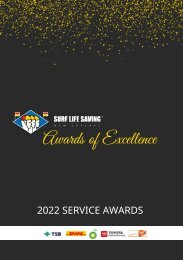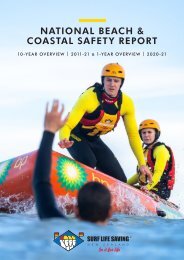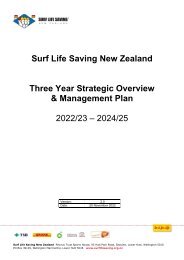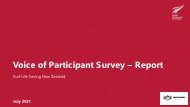National Standard Operating Procedures - Jul 2022
Full NSOP Manual
Full NSOP Manual
You also want an ePaper? Increase the reach of your titles
YUMPU automatically turns print PDFs into web optimized ePapers that Google loves.
Dangerous Conditions - NSOP<br />
Section 1 – Patrol Operations<br />
Version Number: 1.1<br />
Effective Date: 1 August <strong>2022</strong><br />
Review Date: 30 April 2024<br />
Document Owner: <strong>National</strong> Lifesaving Manager<br />
1.0 PURPOSE<br />
To identify when water conditions are not safe for use and patrol.<br />
2.0 SCOPE<br />
These procedures apply to all volunteer and paid lifeguard services.<br />
3.0 REQUIREMENTS<br />
Required PPE<br />
Awards/Licenses<br />
Training<br />
Various depending on duty or task.<br />
SLSNZ Lifeguard Award<br />
SLSNZ Lifeguard refresher<br />
N/A<br />
Other<br />
N/A<br />
Red “Dangerous Conditions” Flag<br />
Equipment<br />
Applicable yellow warning sign (see Temporary Beach<br />
Hazard Sign NSOP)<br />
Club “Daily Conditions” Board<br />
4.0 PROCEDURES<br />
4.1 Complete an operational risk assessment prior to the commencement of the patrol,<br />
and/or during the patrol as conditions change.<br />
4.2 If a risk assessment identifies that the potential risks to water users exceeds the control<br />
measures and/or rescue capabilities of the lifeguards, then the water area must be<br />
advised as dangerous with the Red “Dangerous Conditions” Flag if patrol has not<br />
commenced.<br />
4.3 Inform SLSNZ Regional staff or Surfcom where applicable, that dangerous conditions<br />
exist and there will be no flagged area just an ‘Observational Patrol’.<br />
NSOP<br />
DANGEROUS CONDITIONS NSOP_FINAL 15


